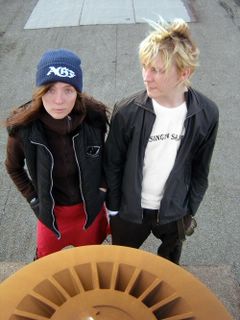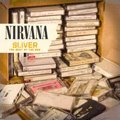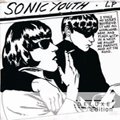
No início do ano passado foram os To Rococo Rot a invadir a estação de metro da Baixa-Chiado, em Lisboa. Este ano, por ocasião da Noite dos Museus, em serão de final da Taça UEFA, recebemos duas das propostas mais vivas da electrónica que ocupa um lugar de nenhures. Antye Greie-Fuchs, que costuma gravar com a sigla AGF, berlinense de gema, enamorou-se por Vladislav Delay, o produtor que veio do frio. Natural da Finlândia, ele junta-se assim a uma das peças do puzzle Laub para a edição conjunta de
Explode. O duo apresenta-se, uma vez mais ao vivo mas agora acompanhado pelo compositor Craig Armstrong, a 4 de Junho próximo, dia em que arranca a segunda edição de Serralves em Festa, no Porto.
Na noite que deixou um amargo de boca dentro das quatro linhas, houve ainda tempo para ouvir o gingão de serviço, o
very british Jamie Lidell, uma caixa de fazer ritmos que deve ter deixado grande parte da socialite, que se concentrava nos jardins do Museu Nacional de Arte Antiga, de boca aberta. As conversas reproduzem-se a seguir.
Como é que se conheceram e porque decidiram trabalhar juntos?Delay – Conhecemo-nos há quatro, cinco anos numa feira de música. Sentimos que podíamos dar muito um ao outro. Já conhecíamos os trabalhos do outro e decidimos fazer algo juntos. Era uma coisa que há muito fazia parte dos nossos planos mas que só agora se concretizou.
AGF – Mantemos uma relação amorosa, para além da relação artística. Eu amo-o mas sabemos separar as coisas quando se trata de trabalhar.
Delay – Temos uma relação estável e isso, de certo modo, permite-nos fazer o que queremos, artisticamente.
O que querem dizer quando afirmam que este disco é dedicado à Natureza? AGF – Passámos dois meses no norte da Finlândia no mais completo isolamento. Atravessámos fronteiras, viajámos muito de carro, chegámos a ter uns problemas com a matrícula, que era alemã. Foi por essa altura que decidimos fazer este disco e mostrar de que forma vivemos esses dias.
Delay – Sim, como é estar rodeado de Natureza, sem contactos com o exterior. Depois desses dois meses, as vozes e os sons tornaram-se mais claros para nós, mais límpidos. Quando regressámos à Alemanha, tentámos incorporar no disco tudo isso que tínhamos sentido. Foi uma experiência muito maior e mais enriquecedora do que qualquer outra coisa que tenha vivido até então.
No vosso set de ontem e também no disco que gravaram em parceria, sinto uma certa economia de palavras. Concordam? AGF – Humm… nem por isso. Às vezes, até sinto que elas são demais. Inspiro-me em livros, filmes mas também no que se passa à nossa volta.
Delay – Não queremos passar mensagem política, embora por vezes se pense que sim. Eu sou do tipo informativo, gosto de ler jornais e livros, gosto de estar informado.
AGF – No hip hop é diferente, claro. Aqui tentei usar as palavras que surgiam da colaboração artística e da relação que nós os dois mantemos. A observação, o detalhe são fundamentais na escrita de palavras, na abordagem de assuntos. As viagens desempenham, com os livros e os filmes, um papel central no florescimento das ideias que queremos explorar. Quando ainda andava a estudar, lia livros com uma frequência tal que aproveitava o caminho para a escola para ler mais. Depois deixei de ler e voltei-me para a música. Foi ele que me recuperou o gosto pela leitura. Gosto muito de autobiografias, por exemplo.
Há aquela música, que de resto tocaram ontem, “Explode Baby”, que parte de uma reportagem sobre uma bombista suicida… AGF – Sim, o que tentei fazer com essa música foi pôr-me no lugar dessa mulher, perceber o que ela sentiu, lidar com a violência, perceber o que a levou a fazer aquilo, no fundo compreender tudo o que está por detrás de um acto desses. E quais eram os meus sentimentos perante isso, as minhas emoções. Mas sempre sem julgar nem me transformar em mensageira política, não é disso que se trata.
Por vezes, a tua voz parece vir de um fio de raciocínio muito rápido, quase instantâneo… Mas voltando ao disco, ele foi depois gravado em Berlim. Sentem que há uma comunhão entre os elementos rurais da Finlândia e a urbe? AGF – Humm… Mesmo em Berlim estivemos sempre afastados do rebuliço. Gravámos num sítio recatado, longe da confusão do centro da cidade. Tivemos muito sossego, muito espaço para gravar. Não acho que haja muita pulsação urbana neste disco.
Delay – Em Berlim também estive isolado. Eu não socializo, nunca vou a festas, clubes, bares ou coisas desse género.
[Pausa para comentar o marisco.]
AGF – Isto é um enorme desafio para mim, conseguir tirar o marisco da concha…
Delay – Confesso que o meu estômago é muito sensível. Se eu comesse isso, deitava logo tudo fora. Não como carne e só gosto de certos tipos de peixe. Se eu comesse essas coisas, o meu estômago ia parecer uma máquina de lavar roupa, às voltas.
Vocês tendem a desviar-se dos métodos mais tradicionais de fazer música electrónica. Consideram-se um duo disciplinado? Delay – Não, de todo. É importante para nós que a música soe humana e não maquínica. Que haja elementos quentes, humanos na música que fazemos. Por isso, tentamos sempre que a nossa proposta seja tudo menos previsível ou temporizada, do tipo “isto vai acontecer assim, e depois entra isto” e está tudo programado ao milímetro,
beat por
beat. Isso não nos interessa, gosto de coisas fluidas. Talvez seja por causa disso que as pessoas dizem que não vamos atrás das formas tradicionais da electrónica. Costumam referir-se a nós como
downtempo e isso não me incomoda. Percebo a necessidade de compartimentar as coisas para tornar mais fácil a assimilação. Mas, em resumo, a música é feita por seres humanos, portanto acho que toda ela, de uma forma ou de outra, tem traços humanos. Não podemos escapar a isso.
AGF – Consigo perceber o que perguntas. Acho que há o risco de alguma dessa música soar pouco emotiva, muito fria e distante. Não quero fazer música de amor mas penso que a poesia tem uma importância tremenda na forma de te expressares. Se for bem feita, a música encontra sempre maneira de ir ter contigo, de te tocar. Temos o
noise, por exemplo, que apesar de tudo soa muito refrescante.
[Neste ponto da conversa, do outro lado da mesa, Jamie Lidell compara o marisco a cera do ouvido.]
Delay, tu começaste como percussionista jazz. O que guardas desses anos de formação? Delay – É óbvio que a minha formação foi estruturante do trabalho que tenho vindo a desenvolver, quer sozinho, quer neste projecto com a Antye, quer nos projectos futuros que venha a ter. Para este disco, e talvez por isso ele soe tão natural, o trabalho de bateria assume realmente alguma importância, sobretudo porque ela é tocada em vez de ser manipulada. A grande diferença é que agora o meu trabalho está comparativamente mais exposto.
Continuas interessada em levar a música para um universo audiovisual? AGF – Sim, sim. É algo que sempre gostei de fazer. Já fiz instalações e estive envolvida noutros projectos multimédia. Esse é o meu plano de reforma. (risos) Não, isso da reforma veio de uma conversa ontem com o Jamie. Mas, neste momento, estou a trabalhar em cinco discos. Tento fazer isso muito devagar, entrar aos poucos.
Vão-se embora de Portugal ainda hoje? AGF – Sim, mas voltamos já daqui a duas semanas para uma actuação no Porto, em Serralves, ao lado de Craig Armstrong.

Jamie Lidell é um músico que se não existisse, dificilmente seria inventado. Produtor britânico, que tanto tem de incompreendido como de admirado, colaborou com Cristian Vogel no projecto Super_Collider em 1999, e com Matthew Herbert. A sua música, verdadeira artilharia sonora banhada a techno de muitos quilates e ainda mais decibéis, foi testada na noite de quarta-feira, logo a seguir ao duo AGF/Delay. Como, no dia seguinte, também se sentou à mesa da marisqueira da Almirante Reis, reproduzimos aqui uma breve e descontraída conversa com o homem, escrevinhada de improviso.
Fiquei impressionado com o concerto de ontem à noite. A primeira coisa que me ocorreu para descrever aquilo que fizeste foi “human beatbox”… Sim, sim. É isso que lhe chamo, “human beatbox” [começa a improvisar falando para o microfone do gravador]. Deixas sair tudo da tua boca, há tanta merda que podes dizer. É muito divertido. Quando era pequeno, costumava cantar por cima dos discos [canta num tom muito agudo]. É uma energia tremenda, é o que a Missy Elliott anda a fazer. Não gostei muito da minha actuação de ontem, não encontrei uma direcção. Os meus últimos concertos foram diferentes, foram óptimos. Deixo passar para a música o que me vai passando pela cabeça. Gosto de sentir logo uma reacção do público. Se fico sozinho, sinto-me perdido.
Achas difícil encontrar uma direcção na tua música? Como disse, tem tudo a ver com a comunicação entre mim e o público. Se encontro um caminho, as coisas acontecem, limito-me a actuar. Tento nunca deixar que os sons se tornem aborrecidos, tento encontrar um bom
groove e explorá-lo durante muito tempo. Isso é que é o techno. Se a minha imaginação se esgotar, deixo de o fazer. Mas quando fazes um mau
show, aprendes muito mais. É bom aprender.
Usas muito os erros que cometes na tua música? Sim, os erros estão por toda a parte. Tanto quanto sei, os erros fazem parte da vida.
Em relação ao teu disco, vai sair em Junho… A 13 de Junho. Chama-se
Multiply e é composto por dez canções. Não há desperdícios neste álbum. São dez diferentes direcções mas que têm algo em comum. São muito intensas, muito extremas. No conjunto, funcionam todas como um livro, mas é sempre o mesmo livro. É como um exercício para mim, uma coisa que me dá gozo, como um
groove da Motown. É tudo muito real. Aprendi muito a fazer este disco.
Pedro Santos (Flur) –
Vais levar este disco para cima do palco? Não, ainda não. Não tenho dinheiro para isso. Fiz algumas datas em Paris com uma série de gente, incluindo a Feist. Quando ela se aproxima do microfone, é como que um super poder que se forma. E depois há mais gente…
Uma espécie de techno big band… Sim, incorpora um pouco de tudo, jazz, indie rock… A Feist é mais nessa onda, do indie rock. Uma canção dela foi single do mês na loja de música do iTunes, imagina. Ela está a atravessar fronteiras, tem uma voz muito doce.
Levas uma setlist contigo quando vais actuar? Sim, mas ontem não olhei para ela. Talvez devesse ter feito isso. (risos) Nunca mais toco sem olhar para a
setlist. Aprendi a minha lição, aprendi a lição.
Foram o quê, 90 minutos? Não.
Pedro Santos –
Não, acho que foi à volta de uma hora. Mas pareceram 90 minutos… [solta um grunhido para o gravador]
Começaste a receber mais atenção por parte dos media quando colaboraste numa compilação da etiqueta Mille Plateaux – e depois com os Super_Collider… [Pensa um pouco] Isso foi há muito tempo. Bom, há várias formas de as pessoas me encontrarem, de me conhecerem. Gosto das abordagens enigmáticas, sem rosto. É algo que aprecio muito. É como com os Boards of Canada, eles nunca tocam ao vivo. Há muita gente a pedir-lhes que toquem mas eles recusam-se. Com este disco estou a lutar pela platina, pela tripla platina. (risos) Se não conseguir, desisto. Estou a gozar, não me preocupo com isso. Os tipos do The Guardian falaram bem de mim e isso é o que importa.
Ao falares em música sem rosto, consideras a tua música inumana? Não, não com este disco.
Multiply é extremamente humano, é como um disco ao vivo. Trabalho com uma equipa muito boa.
[O Bodyspace assistiu à actuação do duo AGF/Delay e de Jamie Lidell a convite da distribuidora Flur.]
http://www.bodyspace.net/entrevistas.php?ent_id=41


















